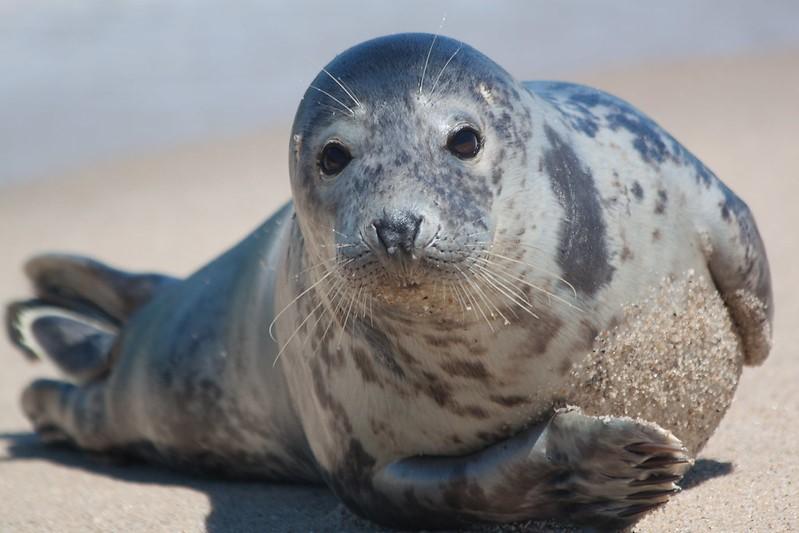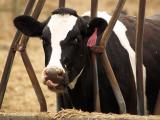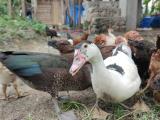Deaths of seals from H5N1 avian influenza in seals stranded on New England beaches last summer stoked growing concerns about the susceptibility of mammals, including humans, to the virus, and now researchers have shared detailed genetic findings from both the seals and birds from the environment, noting a range of virus lineages in the animals and a low species barrier.
The event marked the first known H5N1 detection in marine mammals. Similar events were reported in Canada, Peru, and—according to media reports—Russia. Researchers based at Tufts University published their findings today in Emerging Infectious Diseases. The investigation included key contributions from wildlife clinics and rehabilitation groups in the region, including an extensive regional mammal stranding network run by the National Oceanic and Atmospheric Administration (NOAA).
New England had two waves of H5N1 activity in wild birds in 2022, one that peaked in March and the other that began in June. The H5N1 detections in seals were reported in the second wave, prompting NOAA to declare an unusual mortality event, with more than 330 stranded animals, many found dead.
Low species barrier in seals
In a Tufts University news release, the first two authors of the paper said the collaboration with the groups provided unique and robust data. Wendy Puryear, PhD, a virologist and senior scientist at Tufts, said, "We have a better resolution and greater depth of detail on this virus than before because we were able to sequence it and detect changes almost in real time." She added that the group had pairs of samples, sometimes from a bird and seal at the same beach.
They found a wide range of flu viruses, including at least three strains that crossed the Atlantic, and tracked consistent infection waves in birds. Scientists also screened seals that were and weren't sick.
Kaitlin Sawatzki, PhD, a postdoctoral researcher with Tufts, said, "Because of the genetic data that we gathered, we were the first to see a strain of the virus that's unique to New England. The data set will allow us to more meaningfully address questions of which animals are passing the virus to which animals and how the virus is changing."
During the seal morality event, gulls were hit hard by the virus. Researchers said the gulls can transmit the virus through different routes, including contact with sick birds or exposure to contaminated environments. In the paper, the group wrote that, unlike other mammals known to contract H5N1, seals don't typically feed on birds.
They said data suggest transmission to seals occurred frequently and that there was a low species barrier in seals. In the seal samples, they saw novel amino acid changes, including some linked to mammal adaptation. And when they looked at morality patterns, they found that nearly all the seals that tested positive for H5N1 were dead or died shortly after, reflecting a high mortality pattern seen in wild birds that aren't waterfowl and in poultry. They note, however, that asymptomatic or recovered seals might not have been stranded with the sick ones.
No definitive answer on seal-to-seal spread
The team wasn't able to answer the question on whether the seals passed the virus to each other. Puryear said it wouldn't be surprising, since seal-to-seal transmission has occurred with low pathogenic viruses.
Sawatzki explained that strong evidence of transmission among mammals requires lots of infected animals and time for the virus to mutate and be transmitted to other seals. "As the virus acquires mutations, we can see shared mutations in the sequences that are specific only to mammals and that haven’t been seen in a bird before. We had the numbers, but this outbreak didn't last long enough to provide evidence for seal-to-seal transmission."
The team found evidence that the virus mutated in a small number of seals, but they haven't found an infected seal since last summer. Another stranding season is set to begin in New England, and scientists say they will be on the lookout for any changes.
H5N1 in Senegalese wild birds
In other avian flu developments, Senegal reported two H5N1 outbreaks in wild birds, the first in just over a year, according to notifications from the World Organization for Animal Health (WOAH). One occurred at a nature park just off the coast, killing 637 birds that included terns, gulls, and cormorants. The other occurred at Pink Lake, northwest of Dakar, killing 330 adult terns.
Also, the US Centers for Disease Control and Prevention (CDC) said yesterday that its flu experts are part of a workshop meeting in Rio de Janeiro, Brazil, this week to discuss ways to improve the Americas region's capacity to detect and respond to avian flu outbreaks. The event was organized by the Pan American Health Organization, the World Health Organization, and the Pan American Foot and Mouth Disease Center.




















